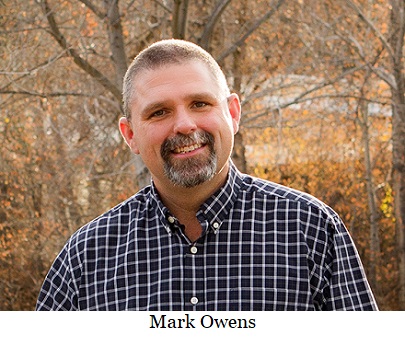
On this day, August 31, 2020, Police in Portland, Oregon, declared another riot after people broke windows, burglarized a business and lit a fire in an occupied apartment building. Officers reported seeing rocks and paint balloons thrown at them, and eventually made 19 arrests as they worked to disperse the crowd.
 Post an Event
Post an Event
| Benton County Republicans’ Private Fundraising Event, “Bent-on Boots and Bling” with Trey Taylor |
| Friday, September 5, 2025 at 5:00 pm |
| Featuring Trey Taylor
Music Private Event
Friday, September 5, 2025 5:00-5:30 pm VIP Reception
5:30-8:00 pm Heavy Appetizers,
Auction, Concert
Red: $750 VIP Reception
Front Row Table Sponsor
White: $500 Table Sponsor
Blue: $50 per person
Limited Seating. Get Yours Now!!!
Support Local
Dress up: Bling, Cowboy, Patriotic Benton County Republican
FUNDRAISER
www.BentonGOP.org
Get your tickets today at:
https://www.bentongop.org/event-details/benton-county-republicans-fundraiser/form
About Trey:
Trey is the youngest African American Man in Country Music History. The Denver Post wrote
"It's impossible to miss his enthusiasm. With a fondness for cowboy boots, gaudy colors and dazzling jewelry, Trey Taylor could stand toe to toe with any of the Pop, Country or even Rap
contemporaries of his generation.“ |
| Trysting Tree Golf Club, 34028 NE Electric Rd., Corvallis |
Proposal gives parents some wiggle room while still protecting young children
Did you know that you or someone you know could be guilty of second-degree child neglect?
SB 368 introduced by Senator Brian Boquist (R-Dallas) aims to modify that law bringing protection to some parents and independence to some young children.
SB 368 looks to modify Oregon law
ORS 163.545 which says “A person having custody or control of a child under 10 years of age commits the crime of child neglect in the second degree if, with criminal negligence, the person leaves the child unattended in or at any place for such period of time as may be likely to endanger the health or welfare of such childâ€.
Children mature at different ages, but is the blanket statement that 10 year-olds are too young to be engaged in independent activities or left alone accurate? A 2019 article in The Mercury News cited that by age 13, 83 percent of kids have their own cell phone and a widely cited 2016 report by Influence Central put the average age for a child to get a cell phone at about 10. In other words, kids can be trusted with a smart phone that can access all sorts of things on the internet but not to engage in unsupervised activities.
Senator Boquist proposes to modify that statute to give parents some wiggle room while still protecting young children. The bill would allow parents to decide if their child is mature enough to engage in specific activities independently: The bill proposes the following be allowed to be unsupervised:
(a)Walking, running or bicycling to or from school or nearby commercial or recreational facilities;
(b) Engaging in outdoor play;
(c) Remaining in a vehicle unattended;
(d) Remaining at home unattended; or
(e) Engaging in a similar independent activity
--Terese Humboldt| Post Date: 2021-01-29 16:42:32 | |
Some are about taxing
Often bills are introduced that “direct ______ state agency to conduct a study to examine_____.†Back during the 2019 Session,
HB 3427 was introduced by the Committee on Rules. It “Directed the Department of Education to conduct a study to examine best methods for funding state’s system of K-12 public educationâ€. By May 16, 2019, the “study†had become Oregon’s newest tax, the Corporate Activity Tax or CAT.
The original one-page bill became 40 pages and passed out of committee and off both floors on a straight party line vote. The Republicans could not stop or even slow down the super-majority. There were 14 amendments brought to the committees and over 30 were drafted. None of the Republican sponsored amendments were adopted. At the end of the day, the “study bill†became Oregon’s newest tax pushed through by the supermajority.
Since the 2019 session, multiple business sectors from pharmacies to agriculture, Automobile dealers to mobile home park operators have come before the legislature at every opportunity possible seeking to carve out their business from the harmful impacts of the “study billâ€. Small changes have been made and carve outs continue to be requested.
As of press time, there were 234 bills introduced, so far, in the House and the Senate that direct _____ state agency to study________ and report back to the legislature. Some of the bills are transparent and state that the agency is to study a current tax or a possible future tax or a specific issue, but other proposed studies are much more vague like
HB 3427 was in 2019.
--Terese Humboldt| Post Date: 2021-01-29 16:32:34 | Last Update: 2021-01-29 16:42:32 |
Comments may be submitted until March
Per
OAR 845-015-0138, the Oregon Liquor Control Commission will consider any written or verbal comments before implementing such a price increase.
Public Action:
The Commissioners of the Oregon Liquor Control Commission will accept written and verbal public comment on the proposed implementation of setting a minimum price. The proposal sets the price by proof and bottle (container) size using a consistent proof base value per container size. No distilled spirit bottle shall be sold for less than the established minimum price.
It is argued by some that the setting of minimum prices can contribute to decreased social harms and adverse health impacts.
Written Public Comment:
Written comments can be
submitted online beginning January 29th, 2021, through March 15th, 2021, at 5:00 PM.
You may also do so via mail to:
Restricting second amendment not the answer
During the evening and overnight hours, Portland Police officers responded to multiple shootings throughout the city of Portland, Oregon.
On Wednesday, January 27, 2021 at 4:50p.m., North Precinct officers responded to a report of shots heard in the 15900 block of Northeast Fremont Street. Officers confirmed that an occupied vehicle was hit with gunfire. At least one occupied apartment was also struck by bullets (21-24790). No one was hurt.
At 9:34p.m., Portland East Precinct officers were dispatched to a report of shots fired near Southeast 122nd Avenue and Southeast Salmon Street. Witnesses described two vehicles driving northbound where occupants appeared to be shooting at each other. Some evidence was recovered. No known injuries.
At 11:37p.m., North Precinct officers were dispatched to a report of someone shot at a house in the 1800 block of Northeast Marine Drive. They arrived and located a victim with serious injuries, who was transported to a hospital. Assault Detectives are investigating (21-25047).
On Thursday, January 28, 2021 at 12:30a.m., North Precinct officers were dispatched to a report of a shooting in the 9100 block of North Mohawk Avenue. They discovered that a suspect fired one round at someone from a vehicle and drove away (21-25118). No injuries reported.
At 3:20a.m., East Precinct officers were dispatched to a report of shots heard in the 100 block of Northeast 129th Avenue. When the arrived they located evidence of gunfire. They checked area homes and found at least one hit by bullets that was occupied by a mom and her two kids. No one was injured. Several parked cars were struck. A gun was also found at the scene (photos, 21-25144). No known injuries.
At 4:38a.m., North Precinct officers responded to a shooting in the 9500 block of North Buchanan Avenue that resulted in the
death of a victim.
At 8:00a.m., officers from Central Precinct responded to the 3100 block of Southeast McLoughlin Boulevard on a report of a shot fired through a window. It was not confirmed whether it was a bullet or some other kind of projectile.
With these events, there have been over 80 shooting incidents so far this year.
All of these cases are under investigation. Detectives are doing follow-up, gathering evidence, and looking for more witnesses. But it's critical that help comes from the community to address this problem. Those who have surveillance systems in the area of these events are asked to review footage and reach out if anything of evidentiary value was captured.
--Ben Fisher| Post Date: 2021-01-29 15:15:19 | Last Update: 2021-01-29 15:29:54 |
Brown is redirecting 32,000 vaccines from rural Oregon to Portland
Republican Legislative leaders Representative Christine Drazan (R-Canby) and Senator Fred Girod (R-Lyons) responded to the Governor’s decision to send 32,000 additional vaccines to Portland, once again prioritizing urban Oregon over the needs of rural Oregon:
“Without public input, the Governor’s announcement that she is redirecting 32,000 vaccines from rural Oregon to Portland is troubling. Cities and counties across the state, who have faced the brunt of the Governor’s shutdown orders, carefully planned to safely vaccinate their communities have suddenly had their allocations redirected. This is an insult to them and unfair to their communities.
“First, the Emergency Board unfairly allocated federal COVID relief money to prioritize Portland. Now this. At a time when we should be uniting as a state, the Governor is picking winners and losers and once again punishing rural Oregon.â€
Governor Brown has been under fire for prioritizing vaccines for public employee unions who have supported her over elderly persons, who have a higher chance of dying of COVID-19
--Staff Reports| Post Date: 2021-01-29 10:04:55 | |
Projectiles thrown and burning dumpster used by crowd
On January 27, 2021, at approximately 9:51 p.m., a large group that had gathered outside of the Immigration and Customs Enforcement (ICE) offices in the 4300 block of South Macadam Avenue of Portland, and began blocking vehicular traffic by moving construction cones and barriers in to the street.
Around 10:30 p.m., the group pushed a dumpster, which had been lit on fire, in front of the ICE building on South Bancroft Street. Federal officers emerged on the ICE property in an attempt to move the crowd away so the fire could be put out by Portland Fire and Rescue.
Around 11 p.m., Portland Police officers responded to the location to assist Federal officers in creating an area where Portland Fire and Rescue could safely arrive and extinguish the dumpster fire. After the fire was extinguished, Portland Police left the area.
A D V E R T I S E M E N T

A D V E R T I S E M E N T
At 11:28 p.m., Federal officers began taking rock-like projectiles from the crowd. Portland police once again responded to assist in dispersing the crowd from the property. As the crowd was dispersed, a crowd control munition was used, and one person was taken into custody.
After the crowd had been dispersed, 50-60 people returned to the ICE building and continued to throw some projectiles towards the building and block traffic on South Bancroft Street. The crowd eventually left the area after 12:00 a.m.
Portland Police did use crowd control munitions but did not deploy any CS gas.
The following person was arrested and booked into the Multnomah County Detention Center on the following charges:
- Nilsson, Karl Anders, 20-year-old, Riot, Disorderly Conduct II, Attempt Assault on a Public Safety Officer
--Bruce Armstrong| Post Date: 2021-01-28 16:09:48 | Last Update: 2021-01-28 16:32:51 |
Mavericks league will feature four teams
Major League Baseball announced in November of 2019 a change in the minor league system that eliminated 40 minor league teams. This ended the Salem-Keizer Volcanoes 23 year connection with the San Francisco Giants. This presented a challenge for Volcanoes CEO Jerry Walker, and he went to work creating something better, the Mavericks Independent Baseball League.
The Mavericks League will feature the Salem-Keizer Volcanoes, Portland Mavericks, Salem Senators and Campesinos de Salem-Keizer, and all four teams will play under the Volcanoes umbrella. Players will be recruited from top-level undrafted and released players, as well as high-level collegiate players and former Volcanoes players. Each team will play 48 games for a total of 96 games at the Volcanoes Stadium. For us baseball enthusiasts that’s a lot to look forward to this summer.
We’ve all watched national sports deteriorate over a political protest when San Francisco 49er quarterback Colin Kaepernick knelt during “The Star-Spangled Banner,†sparking the question of patriotism versus racism. But the baseball diamond has remained largely free of this type of political protest but not immune from the taint on all sports. When Northwest Observer asked Jerry Walker about his vision to help restore the “hero†image to baseball, he responded:
Since 1997, the Volcanoes have spent every season honoring our Veterans, First Responders, Cancer Survivors and the many different cultures that make our country great. We fully believe baseball is the living example of the American Dream. The Maverick League will be a shining example of that commitment.
The Salem-Keizer Volcanoes and the Maverick League are fully invested in baseball bringing the Pacific Northwest together through integrity, tradition, honor and the entrepreneurial spirit.
Walker told the
Keizer Times what he is the most excited for the future is the amount of community involvement the league plans to do with their players. With no travel and just three games per week, Walker wants players to take opportunities to visit local schools, hospitals and senior care facilities. “We are going to have our players entrenched in the community in a way we have never been able to do before, and I think it's going to allow for a much more personal connection with the fans. They will be more than just players on a field.â€
The Maverick League has opportunities for host homes for players that will give families an opportunity to get involved. The new website is
mavericksindependentleague.com where season tickets and ticket packages are currently on sale. You can also email
mavericksleague2021@gmail.com or call 503-390-2225 to purchase seats.
 --Donna Bleiler
--Donna Bleiler| Post Date: 2021-01-28 15:50:13 | Last Update: 2021-01-28 16:04:55 |
Will no longer list individual cases
Starting today, the Oregon Health Authority will no longer list individual cases of COVID-19 related deaths in Oregon in its daily media releases.
Since the first COVID-19 related death was reported in Oregon by OHA on March 14, 2020, the Oregon Health Authority has listed each of the individuals by county of residence, date of death, date of positive test or symptom onset and reported if the individuals had underlying conditions. Those updates have been provided daily since that date.
“Every death from COVID-19 represents a loss, especially for those who knew them best — families, friends and loved ones,†said OHA Director Patrick Allen. “That is why we have listed each case. Moving forward, we will share aggregated COVID-19 related deaths on OHA’s public dashboards, which are updated daily. As the death toll from the virus has climbed, validating and reporting each death has had an impact on our daily reporting. We will continue to honor the lives of each person lost to the pandemic, but in a different way. The dashboard will provide additional information on COVID-19 related deaths that have not been accessible in a visual format before — including data on trends, underlying conditions and residence setting. This dashboard offers the public a clearer picture of the collective toll the virus has taken. But it will never detract from the importance of each Oregonian who is no longer with us.â€
A D V E R T I S E M E N T

A D V E R T I S E M E N T
As of Jan. 27, the state ranks fifth lowest in deaths per 100,000 persons in the country, according to the Centers for Disease Control and Prevention.
Despite Oregon's graceful condition nearly a year after the virus began to spread, the government lockdown mandates continue from Governor Kate Brown. High benchmarks have been set for communities to have the state's permission to "return to normal".
The governor now seems to want the entire population of Oregon vaccinated before she would grant those freedoms back to the people of Oregon that they once had.
--Ben Fisher| Post Date: 2021-01-28 15:09:48 | Last Update: 2021-01-28 16:50:04 |
Does this make us safer?
Wednesday,
HB 3059 was introduced by Representative Janelle Bynum (D-Portland) at the request of the Oregon ACLU. If passed, it “Repeals statute authorizing law enforcement officers to command dispersal of unlawful assemblies and arrest participants who do not disperseâ€.
It wipes ORS131.675 off the books – “When any five or more persons, whether armed or not, are unlawfully or riotously assembled in any county, city, town or village, the sheriff of the county and the deputies of the sheriff, the mayor of the city, town or village, or chief executive officer or officers thereof, and the justice of the peace of the district where the assemblage takes place, or such of them as can forthwith be collected, shall go among the persons assembled, or as near to them as they can with safety, and command them in the name of the State of Oregon to disperse. If, so commanded, they do not immediately disperse, the officer must arrest them or cause them to be arrested; and they may be punished according to lawâ€.
If this passes, look for Portland to continue to be burned, looted and run by mobs of “Peaceful protestersâ€.
--Terese Humboldt| Post Date: 2021-01-27 19:44:37 | Last Update: 2021-01-27 19:55:19 |
“The science has shown us that outdoor activities are saferâ€
Governor Kate Brown announced updates to
county risk levels under the state's public health framework to protect Oregonians from COVID-19. Effective January 29 through February 11, there are 25 counties that seem to be stuck in the Extreme Risk level with high COVID-19 test results. Two counties are at High Risk, two at Moderate Risk, and seven at Lower Risk. Four counties made improvements, but Tillamook stands out moving from Extreme Risk down to Lower Risk. It didn’t just move from the highest risk to the lowest risk level, it is third from the bottom having the lowest case count per population. One thing is noticeable for
counties in the lower risk levels is that they also rank the lowest in tests given per population. With one exception (Sherman County) all counties testing more than 50% of the population are in the Extreme Risk level.
Is this a coincidence that the
CDC states on their website, “In general, a positive antibody test is presumed to mean a person has been infected with SARS-CoV-2, the virus that causes COVID-19, at some point in the past. It does not mean they are currently infected. An average of 10% of the SARS-Cov-2 are people with colds during the winter. People who receive positive results on an antibody test but don’t have symptoms of COVID-19 and have not been around someone who may have COVID-19 are not likely to have a current infection. They can continue with normal activities, including work.â€
Governor Brown also announced modifications to the guidance for indoor activities in Extreme Risk counties, which will take effect January 29. These modifications allow for a maximum of six people indoors at facilities over 500 square feet (for all indoor activities except dining) with associated guidance for ongoing social distancing, cleaning protocols, and face coverings. For facilities smaller than 500 square feet, the modified guidance allows for 1:1 customer experiences, such as personal training. The updated guidance for indoor recreation will be posted to the
state COVID-19 site. That site indicates under the Metrix that Indoor Entertainment Establishments and Indoors Recreation & Fitness are “prohibited.†However, the Statewide Guidance, Regardless of County’s Risk Level guidelines still permits opening with certain precautions.
A D V E R T I S E M E N T

A D V E R T I S E M E N T
"The science has shown us that outdoor activities are safer than indoor activities when it comes to the spread of COVID 19, which is why we have clearly delineated guidance between indoor and outdoor activities," said Governor Brown. "We have seen over the last several weeks that Oregonians have largely complied with risk levels to the point that we have not seen a surge in hospitalizations that would have jeopardized hospital capacity. This means we are able to make these adjustments for Extreme Risk counties, which should assist both businesses and Oregonians as we continue to work to stop the spread of COVID-19."
The Centers for Disease Control and Prevention says the science of indoor spreading relates to SARS Cov-2, which may or may not carry the virus for COVID-19 and could simply be the common cold.
The CDC indicates the only difference between precautions for outdoors and indoors is being well ventilated and wearing a mask. What science is Governor Brown using to justify closing businesses that provides healthy activity.
“Most of the state remains in the Extreme Risk category," said Governor Brown. "This is an important reminder for all Oregonians to continue to do their part by abiding by the health and safety guidelines in place. Until vaccines are widely available with high participation rates, the surest way to lower our risk and open our businesses and communities is to continue practicing the measures we know are effective in reducing the spread of COVID-19 — wear your mask, keep physical distance from others, avoid gatherings, wash your hands often, and stay home when you are sick."
As 25 counties struggle with pleasing Governor Brown to get off her “Extreme Risk†list, the Governor relays a false positive outlook to news outlets that are
reflected nationally.
--Donna Bleiler| Post Date: 2021-01-27 14:07:31 | Last Update: 2021-01-27 20:19:29 |
COVID is really all about reduction in K-12 class sizes
On January 25th, the Senate Education Committee held an
informational hearing on reopening schools. All the major players were there; Colt Gill, Oregon Department of Education, Dr. Sidelinger, Oregon Health Authority, John Larson, Oregon Education Association (OEA), and so on. ODE and OHA talked about the importance of safely getting kids back into school for many reasons including social emotional learning and student mental health.
During the hearing, Chair Dembrow asked the Dr. Sidelinger a question about vaccination and the continued risk of transmitting COVID after receiving the vaccine. He cited studies done, before the vaccine, stating that school age children have not been shown to transmit COVID. Also, the vaccine is 95% effective of preventing COVID. Although extensive studies have not been done on vaccinated people becoming asymptomatic transmitters, it is assumed in the healthcare community that COVID will act similar to other respiratory diseases like the flu. Vaccinated individuals will not be transmitters. Thus, offering protection for staff in the educational setting as well as the likelihood that students will take the disease home to at risk family members.
However, the tone of the conversation changed when the representative from OEA spoke. He immediately shifted the conversation away from vaccination and to the need for funding from State and Federal sources to address classroom overcrowding, aging infrastructure and ventilation upgrades.
Class size is not a new discussion point on the part of OEA. ODE has reported on class size information since 1997, and the method and measurement has evolved and improved over time. In 2013
HB 2644 established a new class size reporting requirements for ODE as well as requiring that the data be published to the legislature annually.
In 2015 the Legislature passed
HB 2928 which directed a study to be performed on class sizes in Oregon and a report to be delivered to the Interim Committee on Education in 2016. The report was delivered and there were several meetings of a legislative Joint Interim task force over the summer.

The 2017 Legislative session saw the first bill introduced regarding class size, when
HB 2651 was introduced by Representative Margaret Doherty(D-Tigard). The bill “Includes school class size as mandatory collective bargaining subject,†meaning that teachers unions could bargain salary, hours, etc. based on class size. The bill had one public hearing and died in committee.
During the 2018 Legislative session, the class size discussion resurfaced in
HB 4113, introduced by Representatives Doherty and Brian Clem (D-Salem). This time it again “Includes class size as mandatory subject of school district collective bargainingâ€. This time it got a little further. It moved out of the House committee, and off the floor of the House on party line votes. It received a hearing in the Senate but that was as far as it went.
In the 2019 Legislative Session, the bill concept was back again but this time it started in the Senate as
SB 764, introduced by Senators Lew Frederick (D-Portland), Shemia Fagan (D-Portland) and Michael Dembrow (D-Portland) as well as Representative Clem. The bill received a hearing and was voted out of committee on a party line vote. However, this was during the Republican walkout, so it subsequently died on the Senate floor. Part of the reason the bill may have not progressed was due to the annual class size report from ODE submitted Feb 1, 2019 to the legislature. They concluded:
- State median class sizes have remained stable over the last four school years.
- Classes tend to be slightly smaller at kindergarten and first grade than in later elementary grades.
- State median middle and high school class sizes are very similar across subjects, although middle school median class sizes are slightly larger for some core subjects.
- English language arts, mathematics, and world language classes tend to be slightly smaller than classes in the other core subjects.
- However, there is considerable variation in class size, both within a district, and across districts.
- Medians tend to be proportional to district size until practical upper limits of class sizes are met in larger districts.
- Median class sizes for medium to large districts varied widely from a low of 14 students to a high of 29 students.
In other words, class sizes are stable and not necessarily a driving force to be considered in collective bargaining agreement negotiations.
A D V E R T I S E M E N T

A D V E R T I S E M E N T
In addition,
HB 3427, Oregon’s new Corporate Activity Tax did make it out of session, and many believed this was a partial answer to the “class size issueâ€. It would bring in a little over an additional
$1 billion in annual revenue into education funding and in Section 9, 3(c) it spelled out that the Student Investment Account funds (CAT funds) could be used for “Reducing class sizes, which may include increasing the use of instructional assistants, by using evidence-based criteria to ensure appropriate student/teacher ratios or staff caseloadsâ€. One would think this would have solved the class size tied to collective bargain discussion going for the last 4 years. Nope.
In the 2020 Legislative session, the class size tied to collective bargaining conversation was back on the table.
HB 4094 Representatives Doherty and Clem, and Senator Rob Wagner (D-Lake Oswego). The bill “Amends definition of “employment relations†to include class size and caseload limits as mandatory collective bargaining subjects for school districtsâ€. The issue has not been solved by the Student Investment Act -- at least in the eyes of the OEA. The bill was referred to committee but never received a hearing. Some would blame the Republican walkout, but others might assert that you can only bring a bad piece of legislation forward so many times. Not the case.
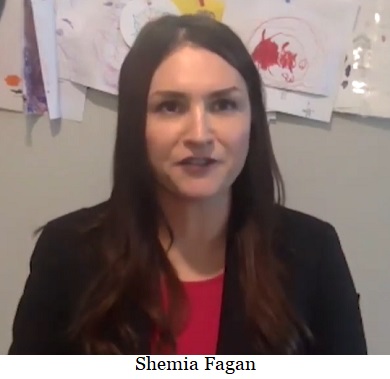
2021 legislative session has begun, and the request is back as
SB 580, introduced by Senators Dembrow and Frederick and Representative Clem. Again, it looks to “Amends definition of “employment relations†to include class size and caseload limits as mandatory collective bargaining subjects for school districtsâ€. The latest ODE Class Size Report for the 19-20 school year which is the 5th annual report since reporting started looks very similar to the 2018-19 school year report. The data showed:
- State median class sizes have remained stable over the last five school years. Small decreases have been sustained for some self-contained classes and for classes at combined schools.
- Classes tend to be slightly smaller at kindergarten and first grade than in later elementary grades.
- English language arts, mathematics, and world language classes tend to be slightly smaller than classes in the other core subjects.
- There is considerable variation in class size, both within a district, within a school, and across districts.
- Medians tend to be proportional to district size until practical upper limits of class sizes
are met in larger districts.
- Median class sizes (as shown in Appendix A) for medium to large districts varied widely from a low of 11 students to a high of 29 students.
If the data continues to show that class sizes have remained stable for five years and if there is a concern regarding class size, it is isolated to elementary grades and also relates to the size of the district (i.e. larger districts tend to have larger class sizes). If the ODE reports are true why is the legislature, again, looking at a “one size fits all approach†for the 197 school districts in Oregon? Why do they want to force districts into negotiating class size in teachers collective bargaining agreements if their specific school has no class size issues?
The COVID “pandemic†has given the OEA power never before seen. Teachers have been out of the classroom for almost a year teaching a modified and often reduced caseload. Now they have an opportunity to use COVID to bargain a return to the classroom if class sizes are small enough to make them comfortable and/or if they are paid more money if the class size goes over the negotiated threshold.
Legislative Session 2021 may finally be their year.
--Terese Humboldt| Post Date: 2021-01-27 10:48:35 | Last Update: 2021-01-27 11:30:21 |
Senate legislative districts to be coterminous with county boundaries
HJR 9 is a proposal that would change Oregon's Constitution and therefore needs to be sent to a vote of the people. It is proposing that the number of Senators be increased to 36 and that each county would be considered a Senate District. The bill is the work of State Representatives Mark Owens (R-Crane) and David Brock Smith (R-Port Orford).
The bill has been assigned to the House Committee on Rules. It has not been scheduled for a hearing at this time.
“I recognize the changes proposed are complicated, but the principle behind this bill is what matters,†said Rep. Owens. “Our vast rural communities are not one-in-the-same and our counties have varied interests that deserve more representation in the Capitol. Right now, the system is outdated and takes for granted the diversity of our region. My hope is this legislation starts an important conversation about ensuring all Oregonians have a voice in their Capitol.â€
This bill would certainly tip the balance of power toward rural Oregon. Currently, large metropolitan counties send several Senators to Salem and many rural counties are gathered together to make up one Senate District. Were the bill to pass and be approved by the people, large, urban counties would get one Senator, as would all the rural counties.
The Oregon Senate has an interesting history. The Original Oregon Constitution had the counties as Senate districts, though the layout of counties in Oregon was a bit different than we know it today. Additionally, Oregon did not redistrict between 1907 and 1960. In 1954 through a ballot initiative, Oregon changed to a "one person, one vote" system in which each Senate District completely contains two House districts, giving us the district configuration we have today. Though the actual districts change every ten years as they are redistricted, there are always 60 House districts and 30 Senate districts.
In 1964, the US Supreme Court decided in
Reynolds v. Sims that legislative districts need to all have roughly the same amount of residents in them. In 2016,
Evenwel v. Abbott the High Court backed off that decision. Neither case dealt with Oregon Directly.
If you know a House District, you can always calculate the Senate district. If it's even just divide by two. If it's odd, add one and divide by two. So House District 14 (even, so divide by two) is in Senate District 7 and House District 45 (odd, so add one and divide by two) is Senate District 23.
--Staff Reports| Post Date: 2021-01-27 07:43:37 | Last Update: 2021-01-27 14:07:31 |
Read More Articles










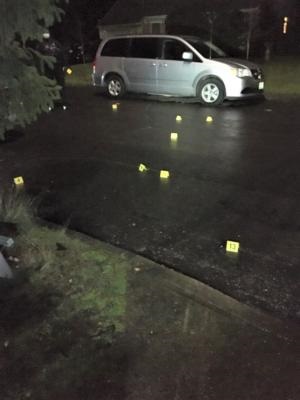
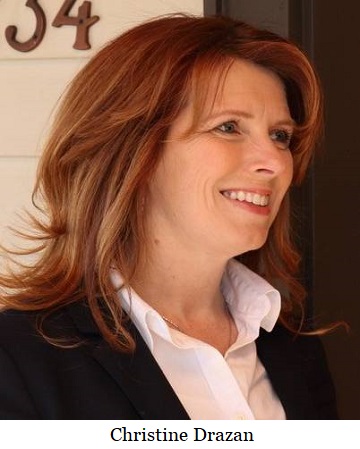






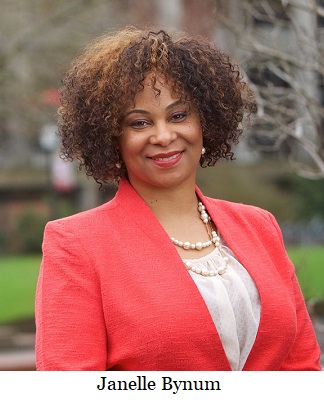



 The 2017 Legislative session saw the first bill introduced regarding class size, when HB 2651 was introduced by Representative Margaret Doherty(D-Tigard). The bill “Includes school class size as mandatory collective bargaining subject,†meaning that teachers unions could bargain salary, hours, etc. based on class size. The bill had one public hearing and died in committee.
The 2017 Legislative session saw the first bill introduced regarding class size, when HB 2651 was introduced by Representative Margaret Doherty(D-Tigard). The bill “Includes school class size as mandatory collective bargaining subject,†meaning that teachers unions could bargain salary, hours, etc. based on class size. The bill had one public hearing and died in committee.

 2021 legislative session has begun, and the request is back as SB 580, introduced by Senators Dembrow and Frederick and Representative Clem. Again, it looks to “Amends definition of “employment relations†to include class size and caseload limits as mandatory collective bargaining subjects for school districtsâ€. The latest ODE Class Size Report for the 19-20 school year which is the 5th annual report since reporting started looks very similar to the 2018-19 school year report. The data showed:
2021 legislative session has begun, and the request is back as SB 580, introduced by Senators Dembrow and Frederick and Representative Clem. Again, it looks to “Amends definition of “employment relations†to include class size and caseload limits as mandatory collective bargaining subjects for school districtsâ€. The latest ODE Class Size Report for the 19-20 school year which is the 5th annual report since reporting started looks very similar to the 2018-19 school year report. The data showed:
